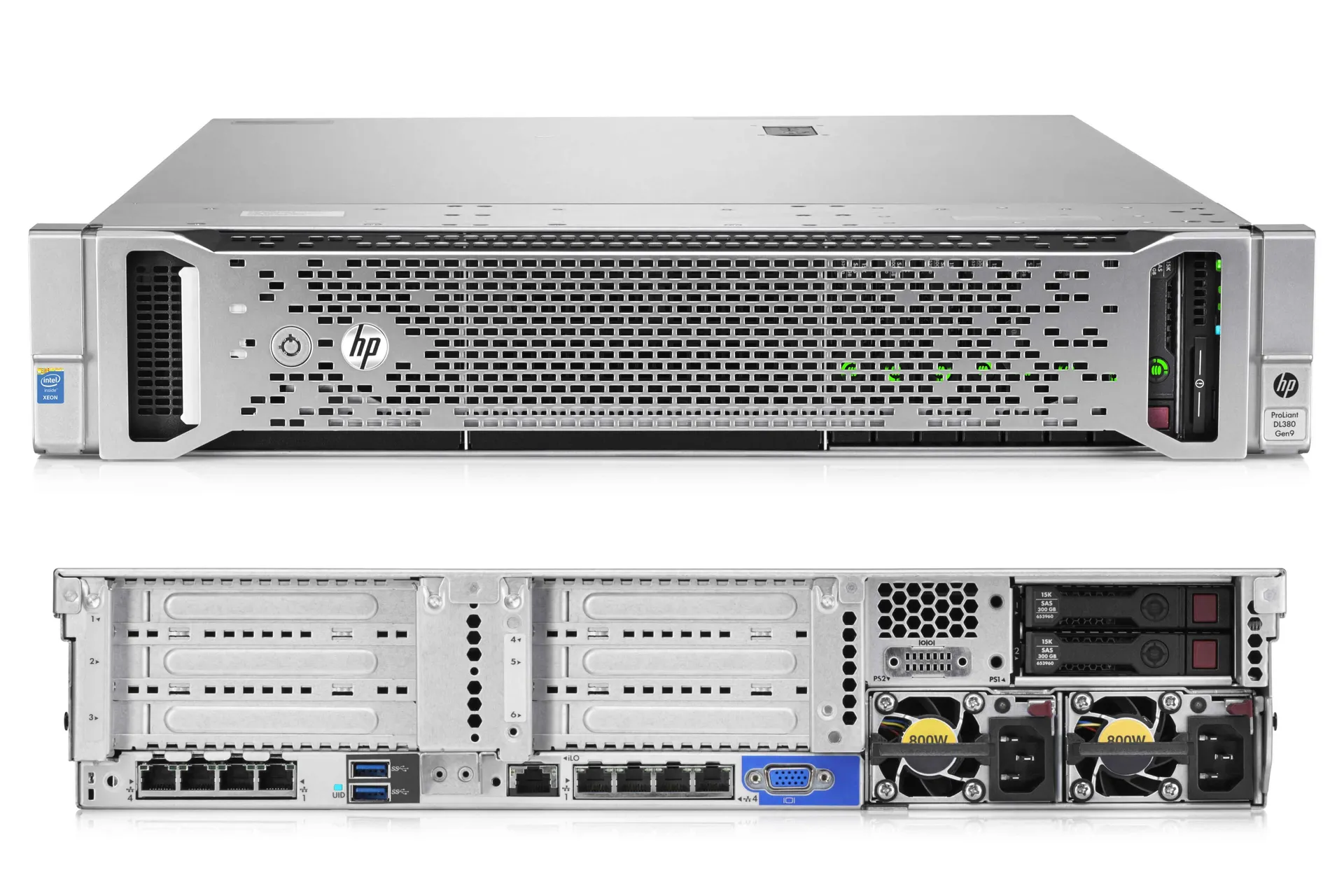
HP ProLiant DL380 Gen9 review
The ProLiant DL380 is a consistent bestseller for HP thanks to its versatility. We take an exclusive look at the 2014 Gen9 model, which has been subject to a redesign.
HP took a long, hard look at the Gen7 and Gen8 markets to determine the best approach. The end result is a more scalable system that allows businesses to pay only for what they need now and leave room for upgrades. The first thing HP did was streamline the product line by ditching the Gen8 e' and p' models.
It may simplify processor choices but the DL380 Gen9 still supports 22 of the E5-2600 v3 family so you can easily tailor the hardware spec (and price) to your workload. Naturally, fast DDR4 memory is on the menu but energy efficiency and storage options have also been improved.
Internally, the DL380 Gen9 is much tidier than the Gen8 with a lot more room for upgrades
Base systems kick باتری سرور g10 off with HP's embedded Smart Array B140i which supports 10 SATA hard disks and RAID5 arrays. Adding a Smart Array P440ar card brings 12Gbps SAS into play and its mezzanine form factor means you don't lose a PCI-Express slot. The 2GB FBWC is also optional and its contents are protected by a new 96W high performance Li-Ion battery.
The most obvious change is to the front panel as its 8+8+8 configuration lets you add blocks of 8 SFF hard disks as required. The P440ar controller supports up to 26 SFF drives and HP's optional SAS expanders mean you no longer need to add extra RAID cards if you go beyond eight drives.
You may be wondering where the other two SFF drives go. HP has redesigned the PSUs by making them 20 per cent smaller and fitted them side by side at the back so the space above can be used for two extra hot-swap drives.
The chassis also supports 12 LFF drives and if you don't want the second riser card at the rear, you can add an optional cage and increase the drive count to 15.
The updated iLO4 interface now includes the Federation view for managing multiple servers

More on the Gen9 menu
The DL380 Gen9 has even more up front as the optional universal media bay provides USB 2 and VGA ports for crash cart access. Even with this in place, you can add two more SFF drives underneath.
Whereas the Gen8 servers only had FlexibleLOM networking options, HP has gone back to embedding four Gigabit ports on the motherboard. Most Gen8 customers were buying the 4-port mezzanine card anyway so it makes sense to provide this as standard.
HP hasn't done away with FlexibleLOM it's just moved the connector over to the other side. You can upgrade whenever you want and HP offers quad Gigabit and dual fibre or copper 10GbE mezzanine cards.
At present, the server supports 768GB of DDR4 memory using 32GB DIMMs. With 128GB DIMMs, this can be pushed to an app busting 3TB and you'll have plenty of time to save up as HP won't be supporting these big boys until mid-2015.
HP SIM provides general network management tools for all SNMP compliant systems
Power to the server
The review system was supplied with a pair of 14-core 2.3GHz E5-2695 v3 Xeons delivering an impressive 56 logical cores. Dell supplied the same CPUs when it gave us exclusive access to its PowerEdge T630 and we were pleasantly surprised when HP quoted us 2,235 per CPU - 550 less than Dell.
HP's efficiency drive has paid off as we measured the review system pulling a modest 90W in idle and peaking at 352W under extreme load. Dell's T630 may be a tower but it had an almost identical hardware spec which drew 120W in idle and peaked at 390W.
HP has tightened up its server support as you only get access to regular ROM BIOS firmware updates with a valid warranty or support contract. However, it will provide open access to critical firmware updates regardless of support agreements.
The Insight Online iOS app provides in-cloud monitoring of registered HP systems
The management
HP's iLO4 v2.0 now has a dedicated Gigabit port and its Federation view manages multiple servers from a single system. Place them in groups and you can monitor their health status, control power and use automatic power capping.
While iLO4 provides on-system management, HP's extends this to on-premises with SIM (Systems Insight Manager) and its latest OneView. The latter provides a single view of all managed servers, storage networks and virtualized environments.
HP has pushed this into the cloud as well with the new Insight Online app. We loaded this on our iPad and after logging in with our copyright account, viewed registered systems, monitored support cases and checked those all-important support contracts.
Overall
It's no surprise the DL380 is HP's top seller as it has always offered an impressive range of features. The new Gen9 model builds on these successes as along with uprated storage and improved power efficiency, its new design makes it even more scalable.
Verdict
The DL380 Gen9 is one of the most versatile rack servers on the planet and HP’s pay-as-you-grow design makes it even more affordable. The new storage and remote management features are impressive while power consumption is low.
- Chassis: 2U rack
- CPU: 2 x 2.3GHz E5-2695 v3 Xeon
- Memory: 64GB DDR4 2,133MHz 1.2V (max 768GB)
- Storage: 2 x 300GB HP 10k SAS hot-swap hard disks (max. 26)
- RAID: HP Smart Array P440ar 12Gbps SAS/2GB DDR3 FBWC/BBU
- Array support: RAID0, 1, 10, 5, 50, 6, 60
- Expansion: 6 x PCI-e Gen3 slots (with 2 risers)
- Network: 4 x embedded Gigabit
- Other: FlexibleLOM, internal USB 2 (2), SD card slot
- Power: 2 x 800W Platinum hot-plug PSUs
- Management: HP iLO4 Advanced with Gigabit
- Warranty: 3yrs on site NBD